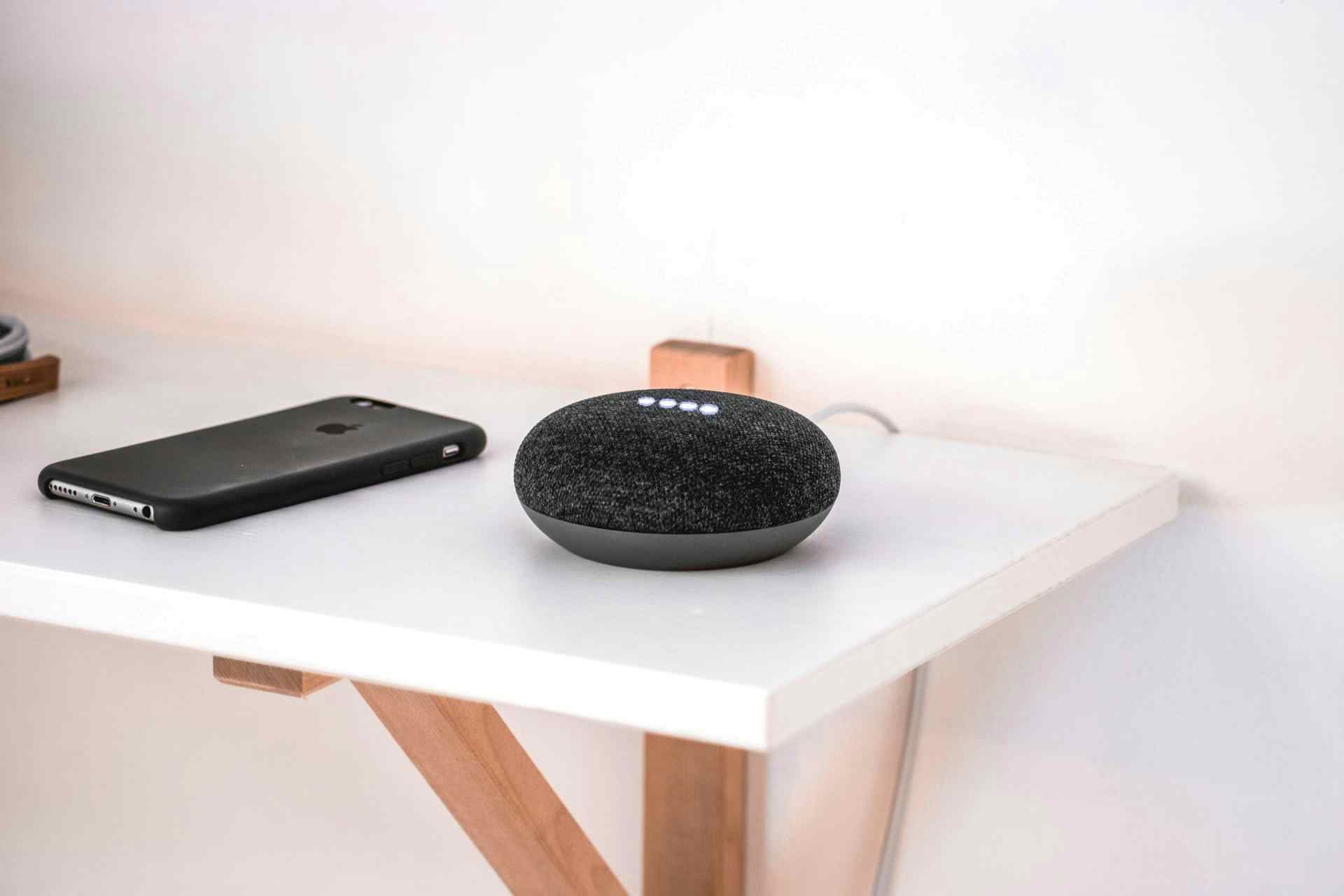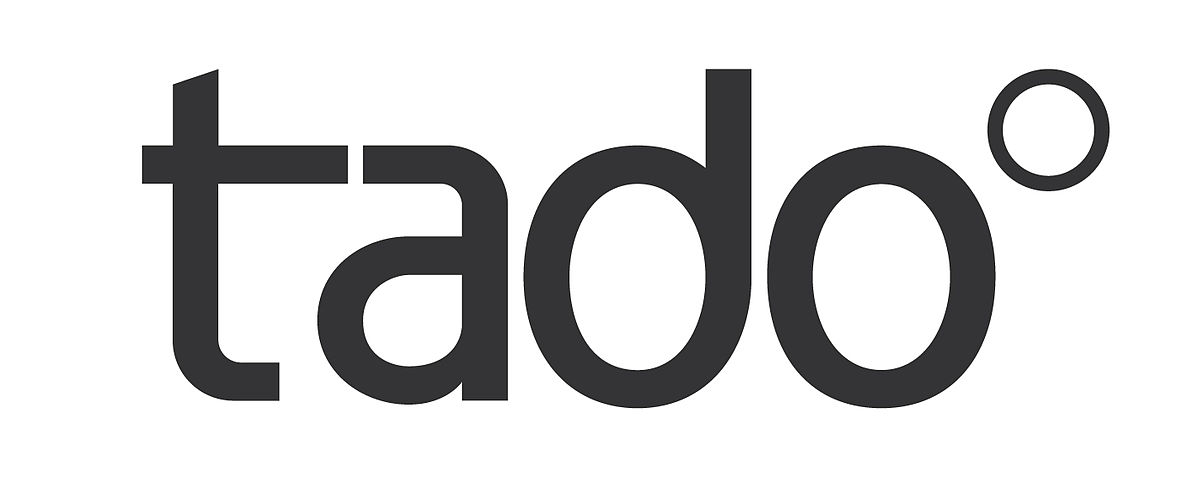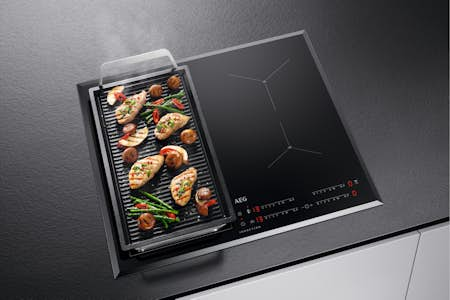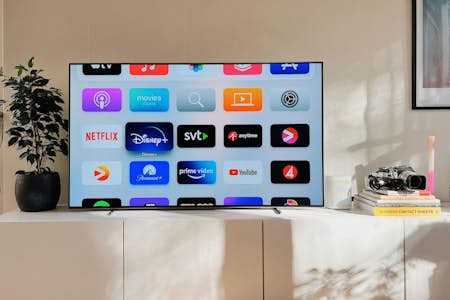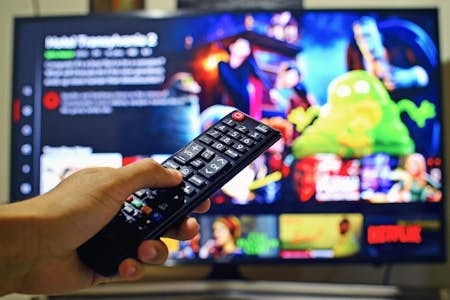Today's smart home is what many imagine it to be. Our homes are a place where various technologies and gadgets work based on automated or pre-configured schedules, listening to us and adhering to our every command.
Whilst many consider the smart home an unessential 21st-century creature comfort, smart home technologies yield considerable value for people of all ages. Once you actually get stuck in, you might wonder how you ever managed before!
Interest in smart homes amongst older demographics is rising. Smart home setups save people time and energy whilst injecting a little futurism into your house and are great for boosting independence, safety and home security. You don't have to love gadgets to get use out of a smartphone, not that it doesn't help!
Smart homes: a short explanation
A smart home is an interlinked, automated home that allows users to control appliances, thermostats, lights and many other electronic devices remotely without manually performing the action.
These smart home devices, also called IoT (internet of things) devices, communicate wirelessly and speak a universal language.
Smart home devices use Bluetooth or WiFi connectivity to communicate with each other. Each device is controlled via voice commands through a smart home speaker or hub or with a smartphone, tablet or computer app acting as a remote control. If you don't yet have a smartphone, check out our article on the best smartphones for over-50s.
Whilst smart homes are unfamiliar territory for many, there are genuine benefits, and it's no longer fair to dismiss them as mere novelty. Controlling a constellation of devices and gadgets from your phone or smart speaker is fun and exciting (which tends to convert a lot of sceptics in itself!) and provides genuine tangible benefits.
Smart home automation saves time and energy
Smart homes can save a vast amount of time and energy. These setups can be particularly beneficial to those with disabilities, particularly sensory disorders, memory issues, and mobility issues.
For example, a smart home can help you:
- Use your phone to check who's at the door before answering.
- Turn smart lighting on and off with a simple voice command.
- Receive daily reminders to help you remember key events, appointments or medication.
Many people find their smart speaker voice assistant comforting and enjoy asking them questions, using them to play music and discover news stories. On top of this, smart speakers still do the simple things like playing the radio.
Smart home automation increases home security
Smart home systems help secure your home.
For example, you can:
- View who's at the door from your phone when someone rings the doorbell.
- Monitor smart security cameras from anywhere.
- Dial 999 or other emergency contact numbers without a phone via voice command.
Smart security systems use motion and sound sensors to detect unusual noises inside or close to the house. Smart locks enable secure keyless access to your home, which is great for letting in trusted friends and relatives without handing out keys.
Smart home security technologies are developing all the time, but they're already excellent and can really benefit older people.
Smart homes help seniors stay connected
Whilst technophobes and the non-tech-handy tend to shy away from smart home technology, it’s actually easier to use than conventional devices.
Smart home gadgets like smart displays enable you to quickly contact your family and friends. For example, you can simply say something like, "Alexa, video call Kerry," and the smart display will call them without you interacting with a complex software interface. This is much quicker and simpler than launching Skype, Zoom, or other apps.
Smart displays and speakers can read out the daily news and weather or announce reminders such as appointments, keeping you connected to the outside world.
A smart speaker like Amazon Echo can do many things like selecting and playing music, making hands-free calls, playing the radio and setting alarms and reminders. Being able to control all of those things with your voice is fantastic - it's a simple and intuitive way to access modern technology.
We spoke to Matthew Powell from www.warmzilla.co.uk, who told Age Times: "Smart home devices enable people to live more independently and more safely. Installing smart devices helps to make everyday tasks easier, like turning the heating on and off.
"Another aspect that is not discussed enough is the role of smart devices in senior citizens' physical and emotional wellbeing, from setting reminders to take medication to keeping in touch with family and friends with a push of a button or just a word. If the worst should happen and an ambulance is required, you can use a smart speaker to call one, even if you're immobilised.
"As the setup of these devices is now very easy, we'll undoubtedly see more smart devices in people's homes in the future."
Where to start: picking an ecosystem
Before selecting smart home devices and gadgets such as smart speakers, smart thermostats, lighting, smart doorbells and so on, you’ll need to pick your ecosystem.
Four main ecosystems are currently dominating the market, and each one is likely a familiar name:
- Google Nest
- Amazon Alexa
- Apple Homekit
- Samsung SmartThings
Broadly speaking, all are similar, but most people synergise with one more than the others.
- A long-term Apple user who owns an iPhone, iPad, iMac, iWatch or Macbook should strongly consider Apple Homekit.
- Amazon Alexa is probably the best-known option and great for those who want to execute smart home commands with just a smart speaker.
- Samsung SmartThings is the new kid on the block and has excellent compatibility with hundreds of smartphone devices.
- Google Nest works with the Google Home smartphone Android app. It has mass appeal for non-Apple users looking for an alternative to Amazon Alexa. A great choice if you're familiar with Android phones and Google services.
One thing to note is that once you choose an ecosystem, you may be somewhat 'locked in' to the products it supports. So, for example, Apple HomeKit is probably the most 'locked-in' of the main options. Still, it's also probably the easiest to use, so if you own a lot of Apple products, it might be the best option.
Smart home hubs
Let’s start by defining what a smart home hub is. The smart home hub is the central command for your smart home, along with your smartphone. To control your smartphone devices, you’ll either be:
- Using voice commands
- Using your smartphone as a ‘remote control’
Voice commands are routed through either a smart home speaker or smart home display, which are very similar. We'll look at both shortly.
Do you really need a smart home speaker or display to operate smart home devices? It's highly recommended, as operating your devices via voice is much, much easier than doing everything through your phone. Smart speakers and displays are also excellent devices in their own right and handle everything from music playback to hands-free calls and video chats.
Best smart speaker
Smart speakers are central to the smart home setup and experience. Not only do smart speakers play music and respond to questions like "when's the next train from Kings Cross to York," but they also act as "HQ" for many of your smart home devices.
You can learn more about why smart speakers are worth it here.
Amazon Echo and Echo Dot
Amazon's two main smart speakers are the Amazon Echo and Echo Dot. The Echo Dot is a smaller, compact version of the Amazon Echo.
Amazon's smart speakers feature excellent voice sensitivity and audio quality. The Alexa Skills section, accessible with the Alexa app, boasts a whole host of features that are being developed all the time. For example, if you did want to check the train times, you'd need to enable the National Rail skill in the Alexa app.
Google Nest Audio
Google Nest and Nest Mini broadly correspond to the Echo and Echo Dot. Both are high-quality smart home speakers that work with Google Assistant voice control. This is a powerful tool that connects directly to the Google search engine. This feature can help streamline looking up information, requesting directions, or getting train times and traffic updates.
Apple HomePod and HomePod Mini
Following in the same vein as Google and Amazon, the Apple HomePod and HomePod Mini are the big and small siblings of the Apple ecosystem. Both are great smart speakers with superb audio quality. In addition, apple's Siri voice assistant enables you to do everything from checking the weather to finding directions, opening times, recipes and more.
Sonos One
A smart speaker compatible with Alexa and Google Assistant voice control, the Sonos One is ideal for those looking to step outside the main options. However, it's probably only suitable if you want a slightly more customised setup.
Best smart display
Smart displays perform a very similar task to smart speakers - they act as the central command for your smart home. The primary difference is that they have touchscreens and speakers to provide information in a visual format on top of audio. This crucial difference makes smart displays by far the better option
if you're hard of hearing.
Note that not all smart displays are capable of decent music or audio playback - you might need to combine them with a smart speaker to get the most out of them. For example, the Amazon Echo Show 10 is bolted to an Alexa, whereas older versions aren’t.
Google Nest Hub and Nest Hub Max
Google’s two current options are the Google Nest Hub and Nest Hub Max. The Nest Hub Max is a bigger, bolder and more advanced version of the Nest Hub.
Amazon Echo Show
The Amazon Echo Show is remarkably similar to the Google Nest Hub, and it does pretty much the same thing. The latest versions come attached to a large speaker.
Smart home gadgets
With the hub in place, we can move on to smart home gadgets!
Smart home gadgets are incredibly diverse, ranging from home security devices like doorbell and home security cameras to thermostats, automatic vacuum cleaners, and smart lighting.
Smart plugs
Smart plugs plug into any standard mains socket. They link any wired appliance connected to the socket to your smart home system.
Essentially, that socket becomes controllable wirelessly, and instead of switching the appliance on manually at the plug or switch, you can switch it on via voice command or your smartphone.
There are lots of creative uses for smart plugs. You can:
- Turn on a heater to warm the house on your way home.
- Turn on lights or the radio to make it look like you’re in when you’re away.
- Turn on your TV without having to get up - excellent for those with mobility issues.
- Turn on lamps, humidity devices, the kettle or pretty much anything else.
Whilst there are many excellent smart plugs on the market, the Kasa Smart Plug by TP-Link is an excellent choice that works with Google Home and Alexa. Apple smart plugs are available from the Apple Store.
Smart lighting
Smart light bulbs and other smart lighting devices connect to your smart home system via WiFi and allow you to control your lights via voice command or smartphone app.
This is great for those with mobility issues and aids in home security when you're away, as you can switch your lights on to make it look like you're in.
There are various smart lighting systems available. Philips Hue is one of the most popular, with dozens of options, including ambient mood lights, conventional white light bulbs and even light strips. The Philips Hue Bridge connects all Hue lighting products to either Google Home, Alexa or Apple HomeKit.
It’s worth considering the Philips Hue Starter Kit, which contains everything you need to get started with this exciting smart lighting system.
Roomba vacuum cleaner
Smart home technology has also extended to automated robot vacuum cleaners. One of the leading brands is Roomba and their iRobot® Roomba® 692040. This intelligent vacuum design links to smart home systems and can be triggered by voice commands via Google Assistant and Amazon Alexa.
The vacuum technology is no slouch either - this powerful robot makes light work of most forms of dirt and is extraordinarily good at navigating its way around your home. If you move furniture or leave a chair out or something, Roomba will simply adapt its path.
Smart thermostats
Many homes still feature somewhat archaic heating systems that utilise a basic thermostat to control the entire system.
Smart thermostats allow users to control their heating systems wirelessly. Such functionality is excellent when adjusting routines and schedules or triggering the heating to come on at certain times, like half an hour before getting home from work. The practical benefits of smart thermostats go way beyond convenience, though. They'll also help monitor your energy usage, saving you energy to reduce bills and reduce your carbon footprint.
When equipped with modern heating systems, smart thermostats enable control of the heating in individual rooms, which vastly increases energy efficiency. The UK government is encouraging people to switch to smart thermostats, which can slash heating bills by around £100 per year for an average household.
Hive
Hive has been around for a while, and their new devices work with smart home systems, including Alexa and Google Assistant. Hive and other smart thermostats can be set up in most homes. However, they're most powerful when equipped with Hive Radiator Valves or underfloor heating, allowing you to heat up a selection of rooms without overheating the entire home.
Ecobee
Ecobee works with all smart home ecosystems, including SmartThings and HomeKit. It's had some teething issues in the past, but the latest version is excellent and comes with a range of advanced features that allow users to heat just cold spots in their house without overheating the rest of the house and pause the heating when a door or window is left open.
Nest Thermostat
The de-facto option for most Google Home users, Nest Thermostat works similarly to its competitors. It allows users to heat rooms on a zonal basis, work out ways to increase energy efficiency and save on heating bills by optimising when to heat a home and to what temperature.
We spoke to Ben Price, co-founder of Heatable, who told Age Times: "In our view, no other smart thermostat quite compares to what is offered by the Google Nest. It enables households to create a complete smart home ecosystem with the addition of video doorbells and security cameras.
"This is in contrast to other smart thermostats that have limited ability to work in conjunction with other devices. Nest also a more comprehensive and truly 'smart' experience with geofencing (without the need of having to buy additional sensors as is the case with some of the other leading brands), as well as autolearning and enhanced zoning capabilities."
Smart security devices
Next up, we’ve got smart security devices. The main devices here are security cameras, smart locks, smart doorbells and smart alarms, all of which can sync up to your smart home system for wireless control from anywhere.
Front door security cameras
If you’re going to have one security camera, it’s a wise choice to mount it on or above the front door. That way, you can see who's at your door before you even open it and can catch any snoopers or potential burglars who are scouting out your home. They're also great for seeing where delivery people put your parcels or for catching anyone that steals packages from your doorstep!
The Arlo doorbell camera is an excellent choice here and can be linked to an Amazon Alexa Show smart display to see who's at your front door. More comprehensive functionality is also available from the Arlo app. The Arlo Pro Floodlight Camera is another excellent choice for the front door and comes with a powerful built-in light.
Security camera kits
There are numerous security camera kits available for smart home systems. As mentioned, Arlo is a solid choice, but Google offers their own Google Nest Cameras and Amazon via Ring. Eufy security cameras are the go-to for Apple HomeKit users, but they've got a few other options listed on their site.
Cameras can be fitted inside as well as out. Internal cameras are great for pet owners that want to keep an eye on their pets when they’re out.
Motion sensors and smoke detectors
As well as security cameras, there are many smart-home-compatible motion sensors that trigger upon movement, sending automated notifications to your phone. Smart smoke detectors operate on the same principle and will notify you if they detect smoke in your home so you can act whilst you’re out of the house.
Alarm systems
Finally, alarm systems allow you to trigger alarms remotely based on what you find from motion sensors or cameras. SimpliSafe is one of the leading brands and offers a comprehensive home alarm and surveillance kit compatible with Google Assistant and Alexa.
Smart locks
Smart locks like those offered by industry-leader Yale can supplement or replace traditional key locks. One of the primary benefits here is allowing others to enter your home without a physical key, such as a trusted friend or family member. Smart locks also allow users to share virtual keys, which are excellent for holiday homes or short-term lettings.
Setting up your smart home
Setting up a smart home can be simple or reasonably complex, depending on how many systems and devices you're opting into and using.
A fully-comprehensive smart home that is loaded to the hilt with gadgets might have the following systems:
- Smart hubs and smart speakers in multiple rooms
- A smart thermostat with smart valves or underfloor heating for zonal heating
- Smart lighting systems running via a Philips Hue Hub or similar
- Home security systems, which may also require their own hubs
- Gadgets like vacuum cleaners
It's worth starting simple with, say, your smart speaker or smart display and just one or two devices. Then, once you've got this foundation, you can go about adding new devices.
Most people will probably just need a handful of devices. A smart speaker, smart lighting, a doorbell camera and a thermostat are more than enough to convert a home into a smart home.
In the end, it's down to the individual. Older people might just benefit from a smart speaker and nothing more. It allows you to make hands-free calls (also great in the event of a fall or accident), play music, set alarms and reminders, etc. Being able to do all of those things from one device is a revolution in itself!
IFTTT and Routines
A key advanced feature of smart homes are IFTTT routines. IFTTT standard for “if this, then that” - it’s an automation tool, or protocol, which allows you to build interconnected routines for your smart home.
An example would be a 'prepare house' routine that you can trigger an hour before getting home from work.
Upon triggering the routine, your thermostat turns your heating on, your smart vacuum cleaner does a quick clean, and your smart-plug connected oven gradually begins to warm up. You could even already have something in there cooking for when you get home!
People have built some incredible IFTTT routines that trigger a complex cascade of events. So, for example, you could create a routine that triggers your kettle to turn on and lights to switch on once your alarm goes off in the morning. You could even have your toaster switch on with pre-loaded slices of bread in the style of Wallace from Wallace and Gromit (though it probably won't put your trousers on for you and brush your teeth, sadly).
17 smart home devices for older people
New smart home devices with ever more impressive capability are becoming available all the time. This can make the whole procedure of smartening up your home with technology seem intimidating. Still, if you build your system bit by bit and test as you go, the process usually goes very smoothly indeed.
Whilst they were once considered a novelty and nothing more, smart homes these days have numerous practical uses that suit everyone across all age groups and demographics. In fact, many of these smart home gadgets and technologies are excellent for older people and simplify access to useful technology rather than complicate it.

